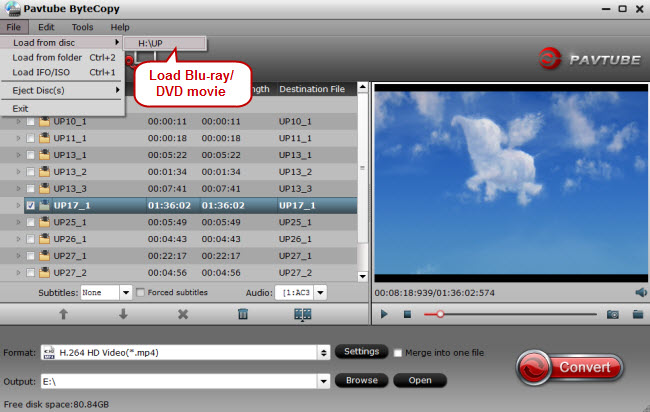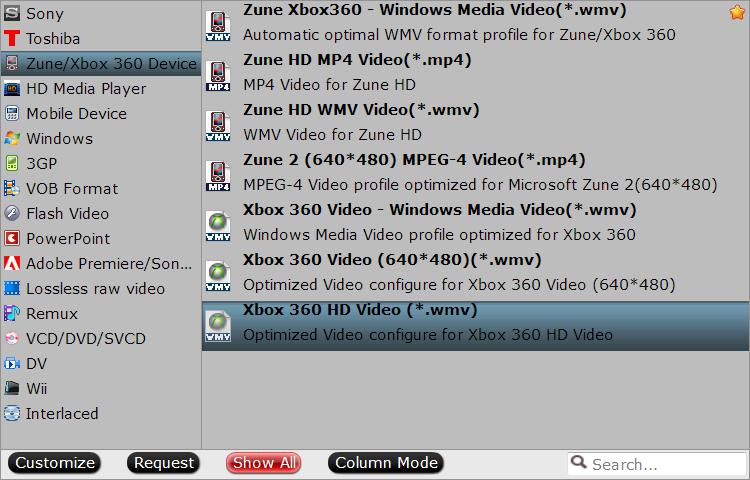Let's guess that how many people are there that get the new Xbox One S for the 4K Blu-ray support? But the happiness will be short-lived when they get the chance to unbox their Xbox One S cause many people who have unboxed their Xbox One S have found that their Xbox One S couldn't play 4K Blu-rays.
To watch 4K video and Blu-ray on Xbox One S, you have to notice two things.
One: Update your Xbox One S
It is said that you have to update your Xbox One S to get 4K UHD support. Besides, it heard that some people even downloaded and installed one update but was still not able to play 4K UHD video and Blu-ray, it probably means that players will have to go through two updates on day-one to start getting the most out of their new consoles. This is nothing new though, the standard Xbox One console needs a specific media player app to play Blu-ray discs. So, after unboxed your Xbox One S, just update it to support 4K Blu-ray.
Two: Make your 4K Blu-ray Region codes compatible with Xbox One S
Game consoles and Blu-ray Players have strict requirement for Blu-ray discs' region codes. Each Xbox One console is manufactured for a specific Blu-ray and DVD region, following international standards. The Xbox One S console can play 4K Blu-ray discs and DVDs that are sold in the same region as the console.
If the region codes are wrong, you can use a Blu-ray ripping tool to remove the region codes from 4K Blu-ray for your Xbox One S. Pavtube ByteCopy is recommended here. This Blu-ray Ripper can decrypt Blu-ray AACS, BD+, UOP, Region Codes,, MKV v61, MKBv62, etc to copy 4K Blu-ray to Xbox One S.
- Rip 4K Blu-ray to 3840*2160P AVI/WMV/MP4 for Xbox One S USB playback.
- Lossless copy 4K Blu-ray to 4K MKV for Xbox One S.
- Compress 4K Blu-ray to 1080P WMV/AVI for Xbox One S, Xbox One, PS4 Pro.
- Remove 4K Blu-ray region codes to region-free for Xbox One S.
- Convert 4K Blu-rayt to 4K MP4/AVI with multiple subtitle and audio tracks.
- Keep 4K Blu-ray Dolby Digital audio, DTS 5.1 audio, Dolby TrueHD 7.1 audio, DTSMa, PCM audio.
Pavtube ByteCopy is also a DVD Ripper that can rip DVD to Xbox One S and Xbox One. It also allows you to choose desired subtitle streaming from 4K Blu-ray and then it will hard burn the subtitle to video so that you can watch 4K Blu-ray movies on Xbox One S with subtitle. You can learn more in this 4K Blu-ray Ripper review.
Steps to Rip 4K Blu-ray to Xbox One S
Step 1: Load 4K Blu-ray movie.
Download 4K Blu-ray to Xbox One S Ripper and connect an external Blu-ray disc drive to your PC, instert Blu-ray disc, and click “Add Disc” button on this 4K Blu-ray to Xbox Ripper to import Blu-ray into this app.

Step 2: Set output file format.
Click “Format” bar, from its drop-down options, select one of Xbox One S supported file formats such as “H.264 HD Video(*mp4)” frop “HD Video” main category. or you can choose output Xbox One S optimized profile settings by following “Zune/Xbox 360 Device” > “Xbox 360 HD Video(*.wmv)” which can also work on Xbox One S 500G/4K TV playable formats.

Then you should click "Settings" to reset video size to 2160p video. You also can choose the proper bitrate, frame rate and sample rate here at all your needs to match your Xbox One S.
Step 3. Start to convert 4K Blu-ray to Xbox One S
Only to click the red “Convert” button on the right-bottom. It will start to convert 4K Blu-ray to Xbox One S supported format. When the conversion is over, click the “open output folder” to open the files directly. Then, connect your Xbox One S to a PC using Windows Media Center or copy the media files to a USB flash drive and play it on Xbox One S.
If you still can't play 4K UHD video on Xbox One S, you can read the below solutions that Xbox One Support team gave. The below troubleshooting is extracted from Xbox One support site.
Troubleshooting 4K and HDR on Xbox One S
First, make sure you have an Xbox One S and a 4K TV, and check your TV's capabilities.
To see if you have an Xbox One S, look on the back of your console. On the right side, near the network port, there should be a sticker that reads "Xbox One S." If that sticker is missing, check the bottom of the console for a sticker that reads "Xbox One Console." An Xbox One console without the "S" does not support 4K.
Important Eject any discs and turn your console off before turning it over.
To see if you have a 4K TV, refer to the packaging or manual for your TV. Different manufacturers use different names. Here are some things to look for:
-
Names for 4K 4K, 4K Ultra HD, UHD, UHD 4K, SUHD TV, Ultra HD, Ultra UDTV, 2160p Listed resolutions or modes 3840 x 2160 at 24 Hz, 50 Hz, or 60 Hz Names for HDR10 HDR Premium, High Dynamic Range, HDR, UHD Color, Ultra HD Premium, Ultra HD deep color
To check your TV's 4K and HDR capabilities, with the console connected and on, double-tap the Xbox button on the controller to open the guide. Choose Settings > All settings > Display & sound, then choose Advanced video settings > 4K TV details.
If your system should support 4K and HDR but it isn't working (for example, you can't select the 4K UHD resolution, 4K features aren't supported in the 4K TV details screen, 4K content won't play, or you're seeing video quality problems), here are some things to try:
Make sure the console is automatically detecting your TV. Double-tap the Xbox button to open the guide and choose Settings > All settings. Select Display & sound > Advanced video settings and choose Auto-detect. 4K isn't available when HDMI or DVI is manually selected.
For HDR, make sure your TV supports the HDR10 media profile. Check your TV manual to verify. Some manufacturers may not mention HDR10—look for support of BT2020 and HDR, or some of the names in the previous list. (Also, there are two HDR formats: Dolby Vision and HDR10. Your TV can support both, but it must at least support HDR10.)
Make sure your HDMI cable is plugged into the correct port on your TV. Some 4K TVs only support their full set of 4K features on specific HDMI ports. Refer to your TV manual to see if there are special 4K HDMI ports, or try the different ports on your TV.
Check your TV's settings menu. Your TV might have a special mode that turns on 4K or HDR. Refer to your TV manual to see if you must change your TV's settings. Again, your TV manufacturer may use different names for HDR—see the previous list.
If some content won't play, make sure your TV supports HDCP 2.2 and that it's turned on in your TV's settings.
Make sure you're using the HDMI cable that was included with the Xbox One S.
Try a different HDMI cable. Your cables must be HDMI High Speed or HDMI Premium certified.
If a device is plugged in between your TV and console, remove it and plug your TV directly into your console with the HDMI cable that was included with the Xbox One S. Some AV receivers or other video equipment may interfere with the data passed between console and TV—your device must support the same capabilities as your TV, either directly or as pass-through. Also, you must use HDMI High Speed or HDMI Premium certified cables between both the console and receiver, and the receiver and TV.
Make sure your TV and AV receiver firmware are up to date. Many newer TVs and devices can take updates—if you find that it doesn't support some 4K or HDR features, a TV or receiver firmware update may resolve the problem. Check your TV or device manual to see how to update the firmware.
If you're seeing a blank screen or errors while trying to play 4K content and you've tried all of the previous steps, turn native 4K playback off to try to play the content in a lower resolution. In Settings> Display & sound > Advanced video settings, clear Allow 4K.
If you receive an error message when you choose 4K UHD in your display settings, see Error when selecting the 4K UHD resolution on Xbox One S.
If you're seeing strange colors while playing HDR content and you've tried all of the previous steps, you can turn HDR off. In Settings > Display & sound > Advanced video settings, clear Allow HDR.
To learn more about what your TV is telling the console about its 4K capabilities, see Checking your TV's 4K and HDR capabilities on Xbox One S.

 Home
Home Free Trial ByteCopy
Free Trial ByteCopy





